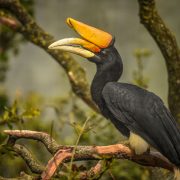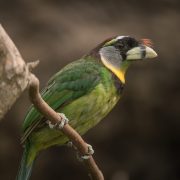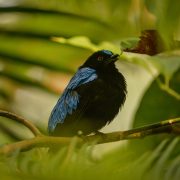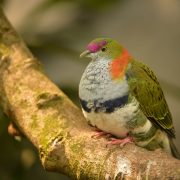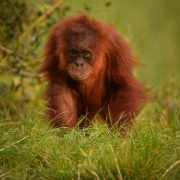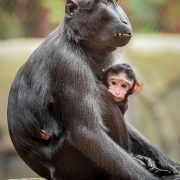A great place to take your students to explore a South East Asian forest habitat in the middle of Chester Zoo! With free flying birds, primates, reptiles, amphibians, invertebrates and amazing plants, there’s so much to see and learn about.
An introduction to Monsoon Forest & South East Asia on Islands
Rainforests cover only 6% of the Earth’s surface but support about 50% of all terrestrial life on Earth making them one of the most biodiverse places on our planet. The rainforests of South East Asia are home to a remarkable assortment of species both big and small, but they are under threat.
As part of our mission to educate people about the rainforests of South East Asia and the species that live there, we built our Monsoon Forest. We’ve put together lots of resources to help inspire learning about the rainforests of South East Asia. These resources are best suited to 7-11 year olds but can be adapted to suit other age groups.
Step 1: Monsoon Forest – a Rainforest Environment
Monsoon Forest was built to look and feel just like the rainforest with 2600 plants, hundreds of animals including free roaming birds and lizards, and even its own rain.
The rainforests of South East Asia are particularly special as they are separated on many small islands and therefore have many species that are found in a small area of that rainforest and nowhere else on Earth. When these animals are threatened, because they cannot move away from the threat, they are more likely to become endangered.
Rainforests are full of fascinating plants and animals and there is so much to learn. Start by getting your learners to do some research to see what they can find out.
To help, we have a rainforests word search and glossary to explain some words relating to rainforests.
Download our: Rainforests Word Search and Glossary
Research using our: Rainforest Videos
In the rainforest there are many different habitats. These are separated in to four main habitats which we call layers.
Find out more with our: What are the layers of the rainforest? [VIDEO]
Whilst you’re at the zoo you could use our: Introduction to Rainforests
Monsoon Forest, like real rainforests, is hot and humid. We even have ‘rain’ at certain points in the day. Have a think about what it would be like to go to a real rainforest.
- What kinds of things would you need to take on an expedition to the rainforest?
- How would you feel? What might you smell? What might you hear? What might you see?
- Discuss why there aren’t as many rainforests in the world anymore.
Step 2: Birds of South East Asia
Due to the rainforests of South East Asia being split across many islands, animals have evolved on their island for many thousands of years leading to many rare and unique species.
Find out which birds you might see in Monsoon Forest by taking a look at The Birds of Monsoon Forest and see how many you can spot when you’re in there!
Monsoon Forest is home to many species of bird from South East Asia. Unfortunately, in the wild these species are threatened with extinction due to habitat loss and the illegal wildlife trade. We have lots of information on our website about the illegal wildlife trade of songbirds where your learners can find out more.
Take a listen to our: Story of the Silent Forest
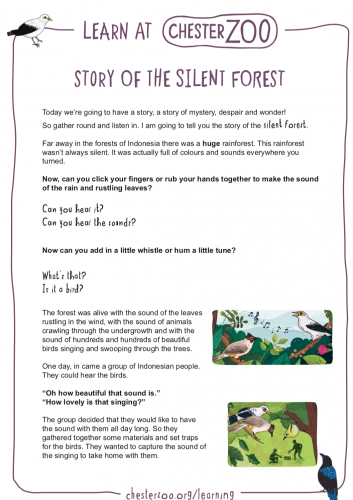
In many areas of South East Asia there is a proverb stating that to be considered successful, a man must have 5 things; a house, a horse, a wife, a knife and a bird in a cage. Due to the competition of living in a rainforest, many South East Asian birds have developed beautiful songs and so are favoured among the local people as they can use them to enter competitions and earn some extra income.
To inspire your pupils, we’ve got lots of ideas and activities for the classroom in our: Sing for Songbirds Curriculum Links Booklet
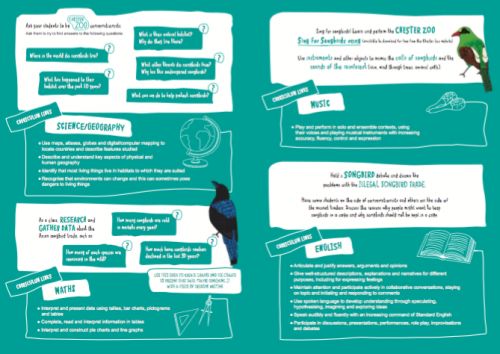
Research some facts about some South East Asian bird species.
Download our: Indonesian songbirds worksheet
To help prevent the extinction of these birds we have breeding programmes for many of them which are housed in our Monsoon Forest. This building provides similar conditions to their natural environment out in the wild including many plants which naturally form part of the birds’ diets.
Step 3: Primates of South East Asia
We have some fascinating primates in Monsoon Forest, each with their own behaviours and social dynamics. Take some time to watch from the windows or even outside Monsoon Forest to see how they interact with one another and their habitat.
To learn more about animal behaviour use our: KS2 Animal Behaviour Collection
Take a look at the primates you will see in Monsoon Forest…
Sumatran orangutans
Sumatran orangutans are surprisingly graceful and agile when they move.
Learn more about Sumatran orangutans with our: Animal Fact File – Sumatran Orangutan
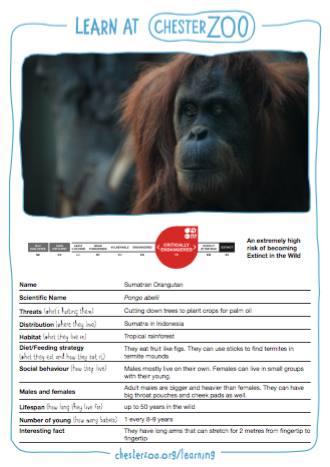
Or visit their Animal Page
Silvery gibbons
Silvery gibbons are easily recognised by their long, fluffy, silver-grey fur and fringe-lined faces
Find out more about Silvery gibbons
Sulawesi Macaques
The macaque is one of the most affectionate monkeys on the planet.
Learn more about: Sulawesi macaques
Hear one of our keepers talk about them with our: Virtual Zoo Day – Sulawesi Macaques
- Can you think of any more primates that live South East Asian rainforests?
- Try making fact files about other animals you find in Monsoon Forest
Step 4: Threats to all forest species
Deforestation is a major threat to the rainforest species of South East Asia. A leading cause of this deforestation is unsustainable palm oil production.
Watch our: What is deforestation? [VIDEO]
Unsustainable palm oil production can have a devastating effect on wildlife in South East Asia.
Learn more about how the demand of palm oil in UK affects wildlife on the other side of the world.
Download our: Supply and Demand of Palm Oil [VIDEO]
Find out about some of the animals affected by unsustainable palm oil: Palm Oil Animal Fact File Collection
There are lots of things we can do in the UK to help prevent extinction by reducing the amount of unsustainable palm oil we use. This helps by reducing the amount of profit made by companies who use unsustainable palm oil and increasing the profit for companies which do. This is better than boycotting palm oil entirely because communities in South East Asia rely on the income provided by palm oil farming and, if done sustainably, it can be one of the most environmentally friendly vegetable oils available to us currently.
The Roundtable for Sustainable Palm Oil (RSPO) are a body that assesses the sustainability of the source of a company’s palm oil and if the strict criteria they use for this are met then that company are able to display the RSPO logo on their product to advertise this.
We’ve got loads of ways to link our Sustainable Palm Oil Challenge to your curriculum.
Take a look at our: Sustainable Palm Oil Challenge – Teacher’s Pack
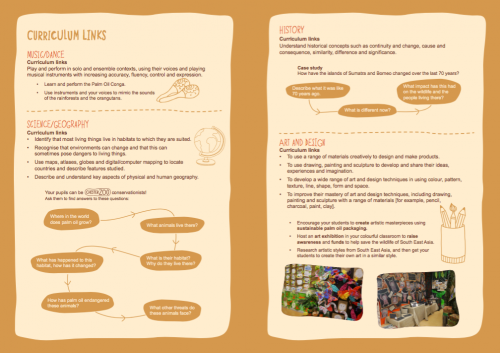
Try tasking your pupils to research what products contain palm oil and sustainable palm.
Download our: Sustainable Palm Oil Investigation
To help everyone find products which contain only sustainable palm oil we’ve created a shopping list of sustainable options.
Download our: Sustainable Palm Oil Shopping List
We have SO MUCH to offer when it comes to learning. From dozens of amazing LEARNING RESOURCES, to our fun and educational SCHOOL TRIPS.
NOW is the time to ACT FOR WILDLIFE. Conservation is CRITICAL; species are under threat. TOGETHER we can make a BIG difference. Take action TODAY and join us in PREVENTING EXTINCTION.
